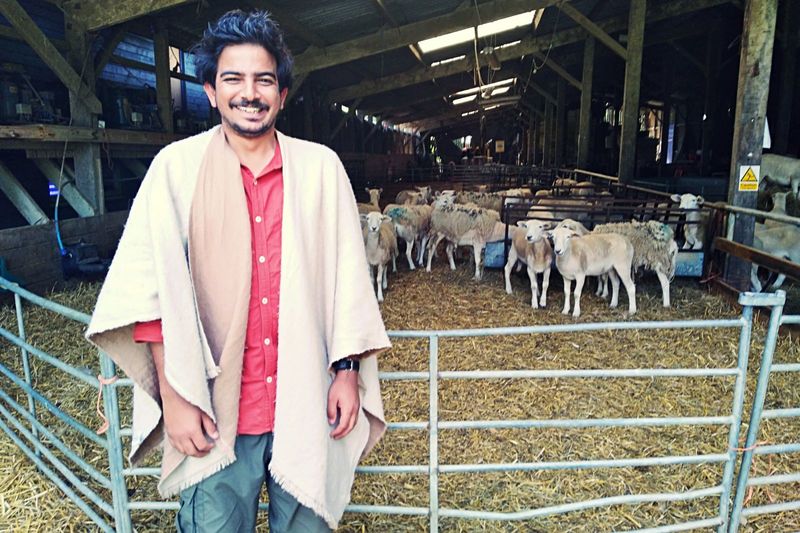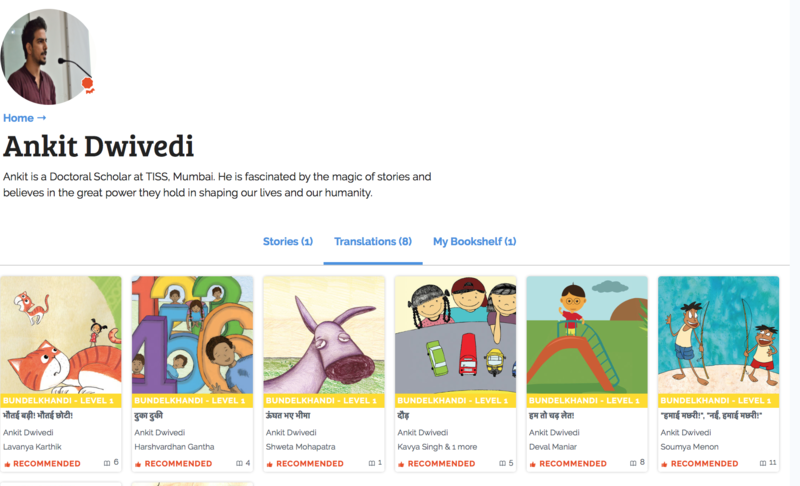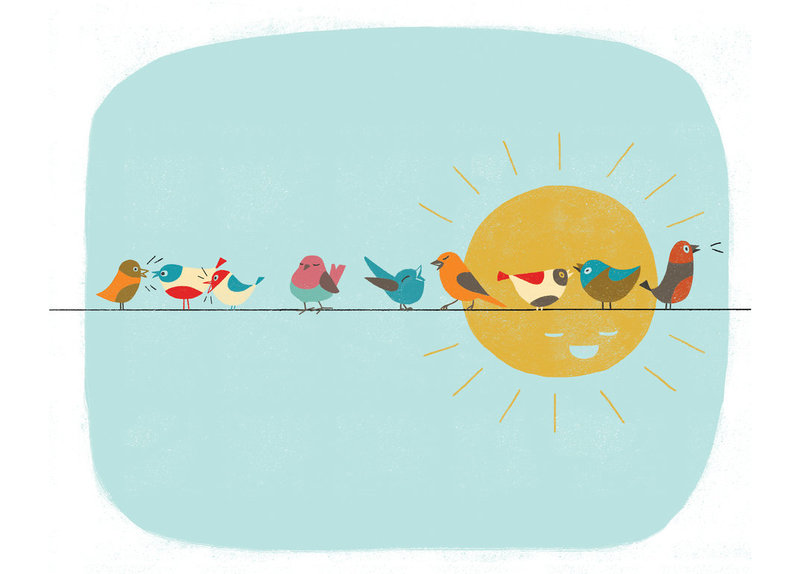#FreedomtoRead 2019: Ankit Dwivedi on how stories in Bundelkhandi can impact children in his home state
Posted by Asawari Ghatage on February 19, 2019Ph.D. scholar and researcher Ankit Dwivedi loves to write and tell stories. He is translating stories into Bundeli or Bundelkhandi language. He is a native of Lalitpur, a city that lies at the heart of Bundelkhand. He speaks the dialect of Bundelkhandi and uses the Devanagri script to write it. Ankit’s research work during his Masters's programme has been a qualitative study of a local language newspaper run by women which have influenced him to explore local language learning possibilities for children. Though there are millions, according to Ankit, who speaks Bundelkhandi language, there is a dearth of interesting and engaging reading material for children in the region. Ankit wants to change all of that by translating and creating a digital library of books in Bundelkhandi. In an email interview he tells us the challenges of translating in his mother tongue and how stories can make for the best company in the world.

Where is Bundelkhandi Spoken?
The Bundelkhandi language is an Indo-Aryan tongue that is spoken in central India's Bundelkhand area. It is a member of the Western Hindi cluster of Central Indo-Ayran languages. Devanagri script is used to write the Bundeli language words.
The poems of the Alha-Khand epic are early instances of Bundelkhandi literature. In the Banaphari area, bards continue to preserve it. The epic tells the story of heroes from the 12th century CE. The age of Emperor Akbar is when formal Bundeli literature was first produced. Kesab Das, a poet from the sixteenth century, is one notable author. During the nineteenth century, Padmakar Bhatt and Prajnes both produced a number of works. At the Chhatrasal of Panna's court, Prannath and Lal Kabi produced a large number of works in the Bundeli language.
Bundelkhandi Language And Its Origins
Rajputs and various other warlike tribes used to primarily speak the Bundelkhandi language. Additionally, it is regarded as an Indo-Aryan language and is mostly spoken in Madhya Pradesh's Bundelkhand area. It is also spoken in various areas of Uttar Pradesh, usually more so in the south.
Bundeli is, however, mostly regarded as the western form of Hindi. It is traditionally connected to Braj Language and was only largely spoken in the north Indian region till the 19th century. There are allegedly 20 distinct ways to speak in this verbal communication.
There are up to 20 million native speakers of this vocal communication. It employs the Devanagari script as its writing system. Even in Madhya Pradesh, the biggest state in India with an area of around 443446 square kilometers, it is recognised as the most often used expression.
This Is What A Bundelkhandi Language Translator Has To Say
Ankit wants to change all of that by translating and creating a digital library of books in Bundelkhandi. In an email interview, he tells us the challenges of translating in his mother tongue and how stories can make for the best company in the world.
Why did you decide to translate storybooks to Bundelkhandi as part of Freedom to Read?
It is always a pleasure to read in the language we have grown up speaking. I realised that there weren't too many many stories or picture books in Bundelkhandi. So, this is my effort and a little step towards building a digital library in Bundelkhandi that is free and accessible to all.
Describe your process of translations and how long does it take usually?
I translate those stories that I enjoy myself as a reader. I spend some time capturing the essence of the story in the original language and wondering how it may be preserved in the language I am translating to. Then, comes the play with words. Reading it out loud helps. As for time, I would say, sometimes it takes two to three hours to translate a story. And sometimes, edits may take days.
What kind of a person do you think makes the best kind of translator for children’s stories?
I believe children use their senses in a much more mindful way than adults. They don’t just want to walk through a garden, they want to taste it, smell it and they want to know how everybody who is living and breathing there feels. For adults, seeing the world from the child's perspective can be an effort and practice. Those who are willing to make that effort can be great at writing, illustrating or translating children’s stories.

What is the hardest thing about translating from English into Bundelkhandi? How do you navigate words or phrases that are tricky to translate?
It is definitely tricky. In Bundelkhandi, just like many other dialects, who is speaking and how one speaks shapes what is being said. Just to give an example, the "Kaay" sound in Bundelkhandi is used to call people out like ‘Hey there’, and make exclamatory remarks like ‘What! Really?’ or in an interrogative speech to ask ‘Why?’. So, while writing, one has to consider what possible meanings the reader might be making out of these. I offer translations to people who speak the language and see how they are reading it. Repeating this process many times over gets us a better draft.
Can you tell us anything about yourself and your job that would surprise us?
I work with stories as a researcher and a storyteller. They make for a great company and people of all ages need the warmth and love they bring. I have seen adults heartily enjoying the simple linear ‘we know what’s going to come’ stories and I have seen children engaging deeply as we peel the layers of complex grey characters. I hope as adults, we take children more seriously. And ourselves, maybe a little lesser.
How Does Learning a Native Language Help Children?
In a way that few other things can, learning a native language may make you feel more connected to your ancestors and culture. The ability to think in one's mother tongue might act as a constant reminder that one is culturally varied and can always retreat to one's "home."
In addition to facilitating communication and interpersonal connections, our native tongue also helps us to comprehend and appreciate our own and our predecessors' cultural heritage. For kids, especially those from various familial situations, it fosters an awareness and understanding that is beyond useful.
Not only that but young children who had access to age-appropriate books and literature in their mother tongue had better pre-literacy abilities than kids who only had access to books in their second language.
Furthermore, Children who initially learn to read in their mother tongue will find it simpler than children who never learn to read in their first language to learn to read in their second language.
Even though they must acquire new letters, sounds, and words to become proficient readers in a second language, children who can read in their mother tongue comprehend the process of reading.
You can read Bundelkhandi stories translated by Ankit here.
Be the first to comment.Launching StoryWeaver English YouTube Channel- A place to watch your favourite stories!
Posted by Pallavi Krishnan on February 08, 2019by Priyanka Sivaramakrishnan
Following the success of our Readalong feature and the StoryWeaver Hindi YouTube channel, we bring to you an exclusive channel for your favourite English stories, the StoryWeaver English YouTube channel! These vides are created to bring stories to life with their audio-visual engagement, making your kids fall in love with the tales. Now you can watch your favourite stories like Goloo, the Circle, Susheela's Kolams, Smile Please, Moon and Cap, and many more, with two new videos being added each week!
 Illustration by Aditi Dilip from Look Up! by Aditi Dilip
Illustration by Aditi Dilip from Look Up! by Aditi Dilip
Aimed at our youngest readers, these stories are mostly Levels 1 and 2, with the videos running no longer than five minutes to make sure that we don't lose the child's attention. Similar to the Readalong feature on the StoryWeaver page, these stories have been carefully handpicked to ensure that they include repeat sounds and words, that are enjoyable to read aloud, have eye-catching illustrations, and a whole lof of pazzaz.
Here at StoryWeaver, we are always looking to see how we can make the reading experience better, what we can give you to help you children revel in the joy of stories. These YouTube videos have been designed with enjoyable background music, a 'natural' narrative coiced by professional artists, and synchronized highlighted text running throughout the story. The act of watching the video, listening to the pronunciations, and following the words allows for easy language acquisition by the child.
To get started on a fun-filled reading experience, subscribe to the all-new StoryWeaver English YouTube channel here.
Be the first to comment.Freedom to Read 2019: Hyperlocal libraries just a click away!
Posted by Pallavi Krishnan on February 19, 2019Written by Priyanka Sivaramakrishnan
StoryWeaver’s Freedom to Read 2019 is our flagship annual campaign to mark the International Mother Language Day on February 21st. We have been collaborating with some fantastic translators, educators and literacy organisations across the world to bring to you digital hyperlocal libraries across underserved languages.
When we opened up the event in November 2018, we had a rush of applications, partners who were more than eager to collaborate with us on this exciting project. We received an overwhelming 200+ applications from 36 organisations and 196 individuals, representing translation partners and individual language champions from not just across India, but also international literacy organisations and individual language champions. Our final selection boiled down to 11 organisations and 8 individuals to help build hyperlocal digital libraries across 30 languages.
With the help of these partners, we targeted 14 underserved languages such as Korku, Marwari, Basa Jawa (Javanese), Bundelkhandi, Pawari, Santaki, Kora, Pashto, Farsi, Chinyanja, Ewe and more.
Since the storybooks created on the platform will be used in classrooms to retain students' interests and preserve local culture and language, we worked closely with the partners to help them curate lists.These curated lists were entirely based on the need of the partner to fill in the gaps. For instance, Agnes N.S. Nyendwa, Editor of Macmillan Publishers, Zambia wanted to make STEM concepts easier to understand, by versioning them to her mother tongue, Chinyanja. The North East Educational Trust (NEET), Assam, India worked towards translating joyful Assamese stories for early readers because there was a lack of material in this category. Afghanistan based Darakht-e-Danesh (DD Library) wanted to translate stories that could be localised to Afghanistan and the social reality of the land. Right To Play is working with a story list that is a cultural fit for Africa and are keen to get the books printed via our publisher partner, BookDash.
To begin the process, we first had to get our partners familiar with the the StoryWeaver platform. Support materials such as the Pratham Books translation manual, tips on translating, FAQ's, and video resources on how to use StoryWeaver as a translating tool were given to the partners. During the training, we reinforced the need for peer to peer review workflows as it is essential to ensure good quality content at such high volumes and also shared our in-house playbook (a ready reckoner of sorts for hackathons) as a resource to partners who were working with teams across geographies with scaled resources to help them conduct hackathons. This was used by African Library & Information Associations & Institutions (AfLIA) to conduct multiple translation hackathons with their teams in Nigeria, Ghana, Kenya, Uganda and South Africa.
We absolutely have to give it to our translation partners for knocking it out of the park, with the lengths they took to make sure that not only books got translated, but more importantly, got published.
They faced many challenges, the biggest of them all being able to complete the project despite not having all the resources. Since we’ve been working with underserved languages from remote locations, our translators were not necessarily the same people who were coming up on the StoryWeaver platform and publishing the same. This led to a lot of searching for support systems. In these cases, most of the translations were pen to paper which would then get passed on to their resource in a town or city with access to computers, where the newly translated stories were uploaded.
Keep watching this space for more news, final roundups and achievements of Freedom to Read, 2019.
Be the first to comment.